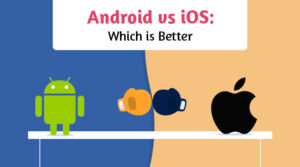If you’re planning a side-hustle in the form of an e-commerce website, or are seeking a new online business opportunity, then you might have come across the term “dropshipping”. But what exactly is dropshipping? Dropshipping is essentially an online business model that enables people to launch a successful online business without worrying about inventory, shipping, and order fulfilment.
“According to a study conducted by Bankrate, 44 million Americans have a side hustle”
A side-hustle can be a really good source of passive income. And if so many people are already doing it, you must be thinking of dropshipping as a ‘get-rich-quick scheme’, which it is not. You need to factor in the drawbacks, obstacles, day-to-day management, and many more. For starting a profitable dropshipping business, you first need to know the ins and outs of this business model.
What Is Dropshipping?
Dropshipping is a sort of retail fulfilment method where an online store, instead of managing warehouse inventory, purchases items from third-party vendors and gets them delivered to their customers. Amidst all this, these online stores take a cut which makes up their profit margin. This completely takes away the need to manage any inventory or worry about shipping.
“Dropshipping businesses do not require an operational capital as large as the one in a traditional business model”
The biggest advantage of dropshipping is that it’s easier to get started with. With a small startup capital and some sweat equity to acquire customers, you’re good to go. Buy wholesale from third-party vendors who have the inventory space, and deliver it to your customers as per demand.
Pros of Dropshipping
Minimum capital requirement
Having a physical warehouse to store your inventory isn’t a requirement at all. Therefore, unlike a brick-and-mortar store, dropshipping retailers will not lock up a lot of money trying to stock up on inventory. All they need to spend money on is the domain and hosting plan of the dropshipping website, and they’re good to go.
In fact, you don’t even have to purchase the product unless you have already made the sale or the customer has already paid for it. So the amount of money out of your own pocket is very minimal in the mix.
Minimal order fulfilment costs
Just like you don’t have to bear inventory charges, you also don’t have to handle the shipping part either. And since shipping is out of the mix, this takes away sourcing, packaging, and delivery of the product as well. All you have got to do is pass on the customer request to a wholesaler and have him move the product along the supply chain.
Easy to get started
Your work as a dropshipping business owner is a lot easier than a traditional retail shop owner. This is because you typically don’t have to worry about:
- Inventory purchase.
- Paying for inventory storage and maintenance.
- Tracking inventory for accounting.
- Handling returns, replacements and other requests.
Cons of Dropshipping
Over-reliance on manufacturers
Since dropshipping owners don’t own a physical warehouse and stock inventory, they are always at the mercy of their partners to keep their own inventory count. So if there is a problem that you have to relay to your partner, you’ll have to go through their customer service first. Moreover, any mistake made by your partners would reflect directly on your business and branding since you possess minimum control over your inventory count.
Low margins
Since dropshipping requires minimal setup charges, retailers set up shop easily and sell at very low prices to attract customers. But low prices means you end up yielding lower margins, despite the better product.
Minimal control over delivery and customer service
Delays in product delivery aren’t in the hands of a dropshipping business owner. Similarly, being a dropshipper, you aren’t part of the supply chain. So if customer service or any other department makes a mistake, you will also be taking the blame.
Common dropshipping mistakes to avoid
Dropshipping could be an ideal business model for entry-level entrepreneurs and sellers looking to get started quickly. Even people who want to launch their own retail brand and side hustlers can opt for this business model.
Lastly, if you are someone who is well-versed with marketing and driving web traffic, dropshipping could work well for you. Keeping this in mind, here are a few dropshipping mistakes to avoid:
“Dropshipping is often interpreted as easy money by a lot of retailers”
- Over-reliance on vendors
- Running after easy-profits
- Not investing enough in promotions
- Selling goods with copyright/trademark without having permissions
- Not establishing a proper return policy
Popular E-commerce platforms to help you get started with dropshipping
- Shopify: Shopify’s said to host around five hundred thousand dropshipping sites and e-commerce stores. The renowned e-commerce platform hosts popular websites like Flat Spot, Negative Underwear and UgMonk, which are ranking on Google’s first page thanks to their well-crafted Shopify SEO strategy. Because of the user-friendliness and 24/7 support, Shopify’s undoubtedly positioned amongst the best e-commerce platforms for people looking to get started with dropshipping.
- Magento: Magento is positioned at second place in terms of most used e-commerce platforms. The developer-friendly platform hosts a multitude of well-known websites like JCB and SelcoBW.
- BigCommerce: Similar to its dropshipping competitors, BigCommerce claims to host about 150,000+ websites to date. Since BigCommerce doesn’t charge you any fee on transactions, the platform is definitely an affordable alternative for dropshipping business owners.
The Bottom Line
Setting up a dropshipping business is not a big task. But having it flourish is a big deal. Initially, you might have lower profit margins, but it may not take too long to have your business take off with patience and a proper marketing strategy. Therefore, it’s crucial to understand the above-discussed ins and outs of dropshipping before proceeding with launching a profitable dropshipping business.










